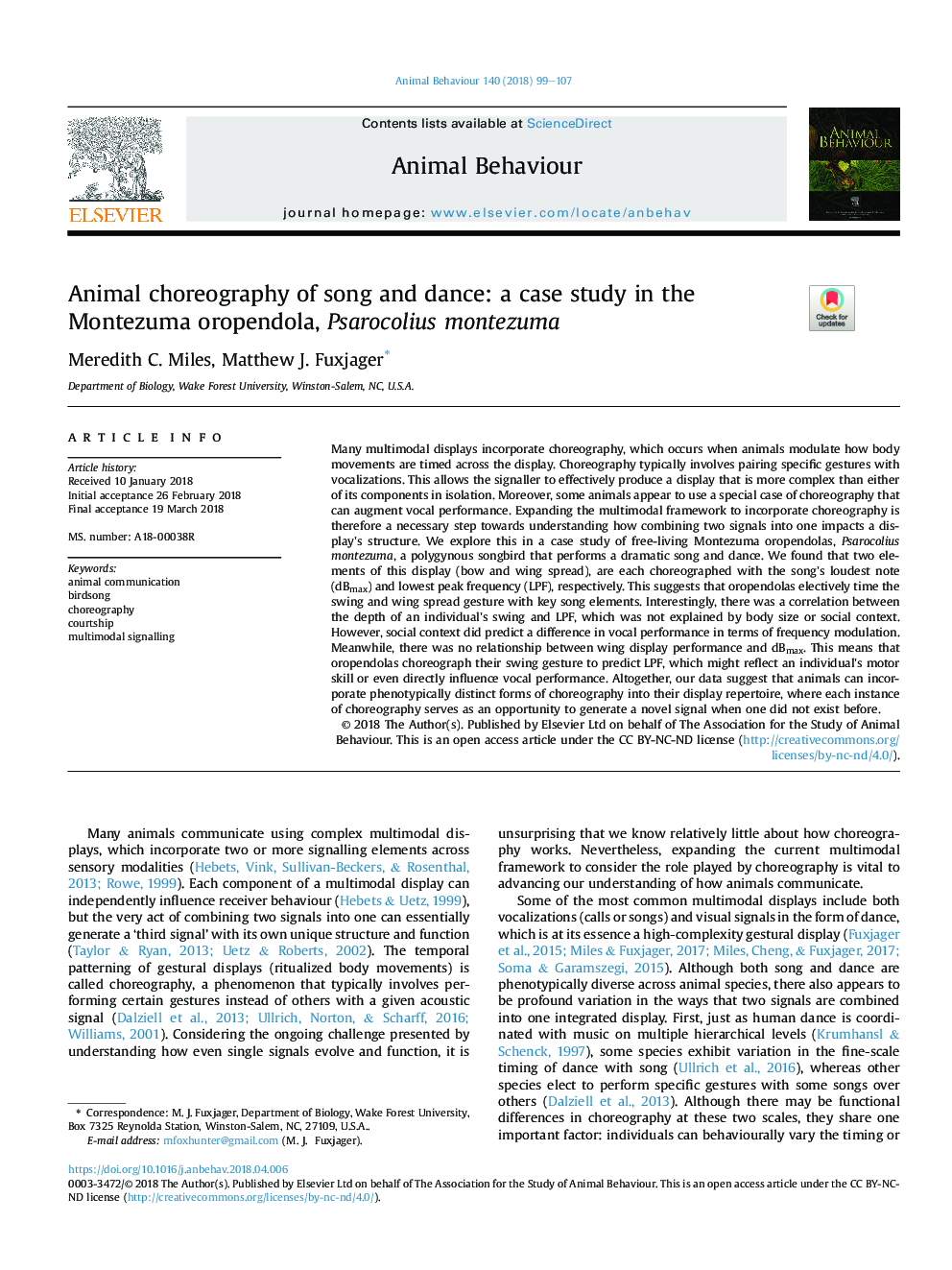| Article ID | Journal | Published Year | Pages | File Type |
|---|---|---|---|---|
| 8488525 | Animal Behaviour | 2018 | 9 Pages |
Abstract
Many multimodal displays incorporate choreography, which occurs when animals modulate how body movements are timed across the display. Choreography typically involves pairing specific gestures with vocalizations. This allows the signaller to effectively produce a display that is more complex than either of its components in isolation. Moreover, some animals appear to use a special case of choreography that can augment vocal performance. Expanding the multimodal framework to incorporate choreography is therefore a necessary step towards understanding how combining two signals into one impacts a display's structure. We explore this in a case study of free-living Montezuma oropendolas, Psarocolius montezuma, a polygynous songbird that performs a dramatic song and dance. We found that two elements of this display (bow and wing spread), are each choreographed with the song's loudest note (dBmax) and lowest peak frequency (LPF), respectively. This suggests that oropendolas electively time the swing and wing spread gesture with key song elements. Interestingly, there was a correlation between the depth of an individual's swing and LPF, which was not explained by body size or social context. However, social context did predict a difference in vocal performance in terms of frequency modulation. Meanwhile, there was no relationship between wing display performance and dBmax. This means that oropendolas choreograph their swing gesture to predict LPF, which might reflect an individual's motor skill or even directly influence vocal performance. Altogether, our data suggest that animals can incorporate phenotypically distinct forms of choreography into their display repertoire, where each instance of choreography serves as an opportunity to generate a novel signal when one did not exist before.
Related Topics
Life Sciences
Agricultural and Biological Sciences
Animal Science and Zoology
Authors
Meredith C. Miles, Matthew J. Fuxjager,
